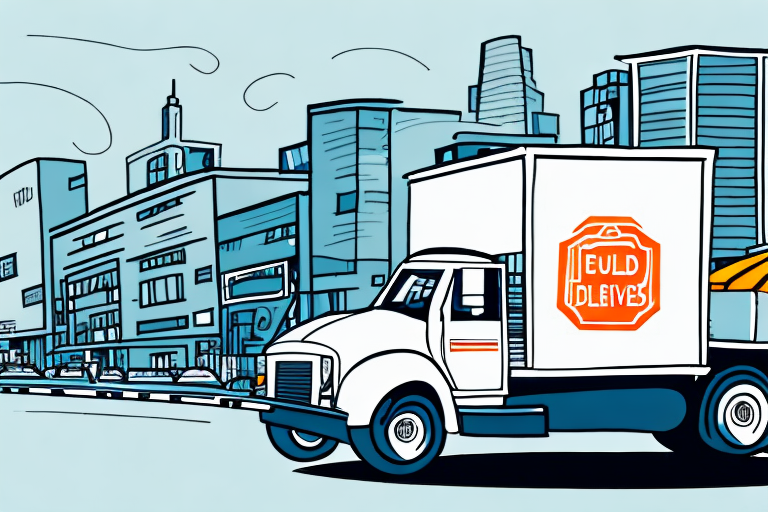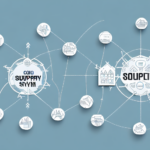Understanding and Optimizing Your Delivery Network
Effective delivery management begins with a comprehensive understanding of your delivery network. Analyze all routes, vehicles, and delivery partners to identify areas for improvement. Collaborate with industry experts to develop strategies that maximize efficiency, manage resources effectively, improve service levels, and reduce costs.
Tracking and monitoring delivery performance is crucial. Measure delivery times, track errors, and monitor customer feedback to pinpoint areas needing enhancement. According to a 2023 supply chain report, companies that actively monitor their delivery performance can reduce operational costs by up to 15%.
Establishing strong relationships with delivery partners is equally important. Set clear expectations, provide regular feedback, and offer incentives for exceptional performance. This alignment ensures that partners are committed to your business goals and dedicated to delivering high-quality service to your customers.
Streamlining Delivery Routes for Efficiency
Delivery routes are a critical component of any delivery operation. Designing routes that are efficient, minimize travel time, and consider factors such as traffic patterns, weather conditions, and delivery windows can significantly impact your operations. Efficient routes help reduce fuel costs, enhance customer satisfaction, and streamline overall processes.
Implementing route optimization software is an effective way to streamline delivery routes. This software accounts for various factors to generate the most efficient routes for each delivery vehicle. It can also adjust routes in real-time based on traffic or weather conditions, ensuring drivers always take the fastest and safest path. Businesses utilizing route optimization have reported savings of up to 20% in fuel costs and a 25% increase in on-time deliveries.
Leveraging Technology for Real-Time Tracking and Data Analytics
Embracing technology is essential for modern delivery management. Real-time tracking technologies like GPS provide visibility into the locations of delivery vehicles at any given moment, allowing for quick responses to potential issues. Additionally, technologies such as Radio-Frequency Identification (RFID) can track packages throughout the delivery process, reducing the risk of lost or misplaced items.
Data analytics plays a pivotal role in optimizing delivery operations. By analyzing key metrics such as delivery times, traffic patterns, and customer feedback, businesses can make informed decisions to enhance efficiency and customer satisfaction. According to a McKinsey & Company study, companies that leverage data analytics in their supply chain operations see a 5-10% increase in efficiency.
Effective Inventory and Partner Management
Accurate inventory management is vital for efficient delivery operations. Implementing a robust inventory management system helps track stock levels, product movement, and the status of outstanding orders. This prevents overstocking or understocking, reducing unnecessary expenses and lost sales.
Choosing the right delivery partners is another critical aspect. Evaluate potential partners based on their experience, reputation, coverage area, and pricing. Ensure they have the necessary insurance and certifications to transport your products safely and efficiently. Partners with advanced tracking and reporting capabilities can provide better visibility and flexibility, such as offering same-day or next-day delivery options, which are highly valued by customers.
Managing Returns, Customer Communication, and Expectations
Handling returns and refunds efficiently is essential for maintaining customer satisfaction. Implementing a clear, customer-friendly returns policy and providing prepaid return labels can streamline the process. Offering product exchanges instead of refunds can help retain customers and prevent them from turning to competitors.
Effective communication is key to managing customer expectations. Keep customers informed about delivery times, order changes, and any issues that arise through email, text messages, or automated notifications. Clear and consistent communication builds trust and enhances the overall customer experience.
Setting realistic expectations from the beginning is also important. Be transparent about your products or services, their limitations, and any potential delays. Actively listen to customer feedback and address their concerns promptly to build a loyal customer base and improve business operations.
Training Staff and Implementing Sustainable Practices
Investing in training programs for delivery staff ensures they understand the delivery process, are familiar with the products, and are proficient in using required tools and technologies. Properly trained staff can reduce errors, improve efficiency, and enhance customer satisfaction. Ongoing training and development opportunities, such as cross-training in different routes or leadership programs, can keep staff engaged and motivated.
Sustainability is increasingly important in delivery management. Implementing sustainable practices like improving fuel efficiency, reducing packaging waste, and using environmentally friendly delivery vehicles can benefit the environment and improve your brand image. Optimizing delivery routes not only saves costs but also reduces fuel consumption and emissions. Exploring alternative delivery methods, such as bike couriers or electric vehicles for short distances, can further enhance sustainability efforts.
Overcoming Delivery Challenges and Making Outsourcing Decisions
Delivery management faces numerous challenges, including driver shortages, unexpected delays, and lost or damaged shipments. Proactively identifying these challenges and developing strategies to mitigate risks is essential for maintaining smooth operations. Investing in technologies like GPS tracking systems and automated notifications can help manage these challenges effectively.
Data analytics can provide valuable insights into delivery operations, helping identify patterns and trends that may lead to delays or other issues. By analyzing historical data, businesses can predict and prevent potential problems, leading to improved efficiency, reduced costs, and increased customer satisfaction.
When deciding between outsourcing and in-house delivery management, consider the pros and cons carefully. Outsourcing can offer lower costs, specialized expertise, and flexibility to scale operations quickly. However, it may result in reduced control and visibility over the delivery process. In-house management provides greater control and alignment with your brand values but may require significant investment in staff and infrastructure. Choose the option that best aligns with your business goals and customer needs.
Conclusion
Managing deliveries effectively is crucial for running a successful business that meets customer expectations. It requires a holistic approach that includes understanding and optimizing your delivery network, streamlining routes, leveraging technology, managing inventory and partners, handling returns, communicating effectively with customers, training staff, and implementing sustainable practices.
By addressing these elements and overcoming common delivery challenges through proactive strategies and data-driven decisions, businesses can enhance their delivery operations, improve customer satisfaction, and achieve long-term success.




















